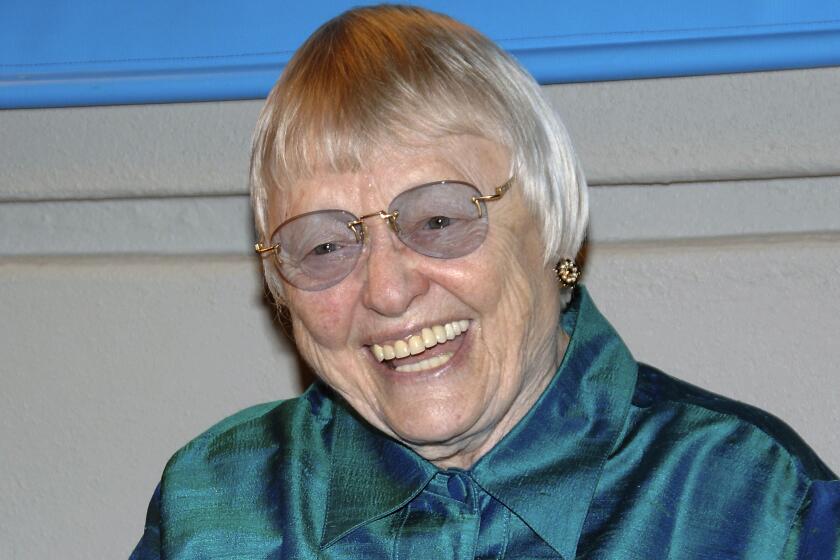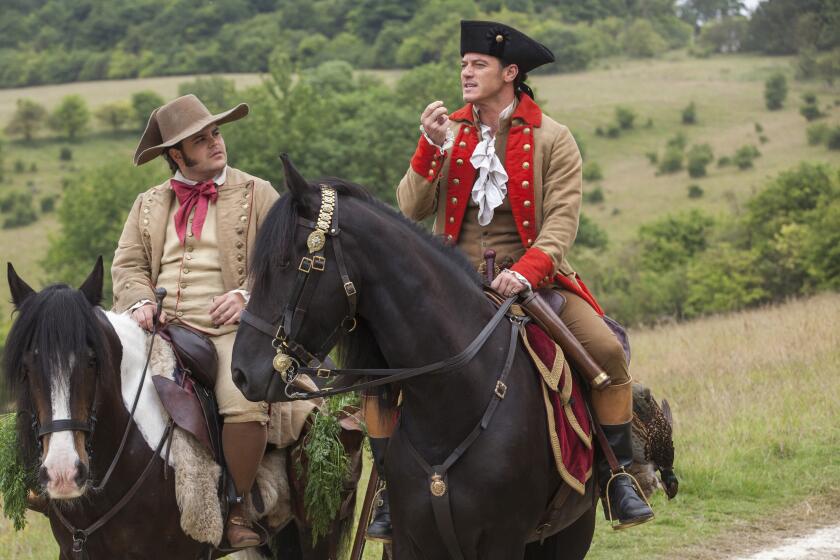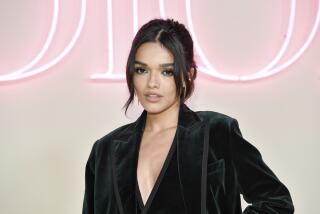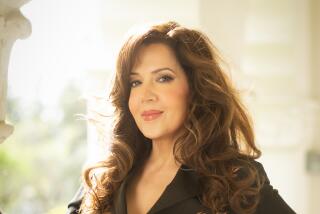How Ursula and ‘The Little Mermaid’ changed Disney history — in more ways than one
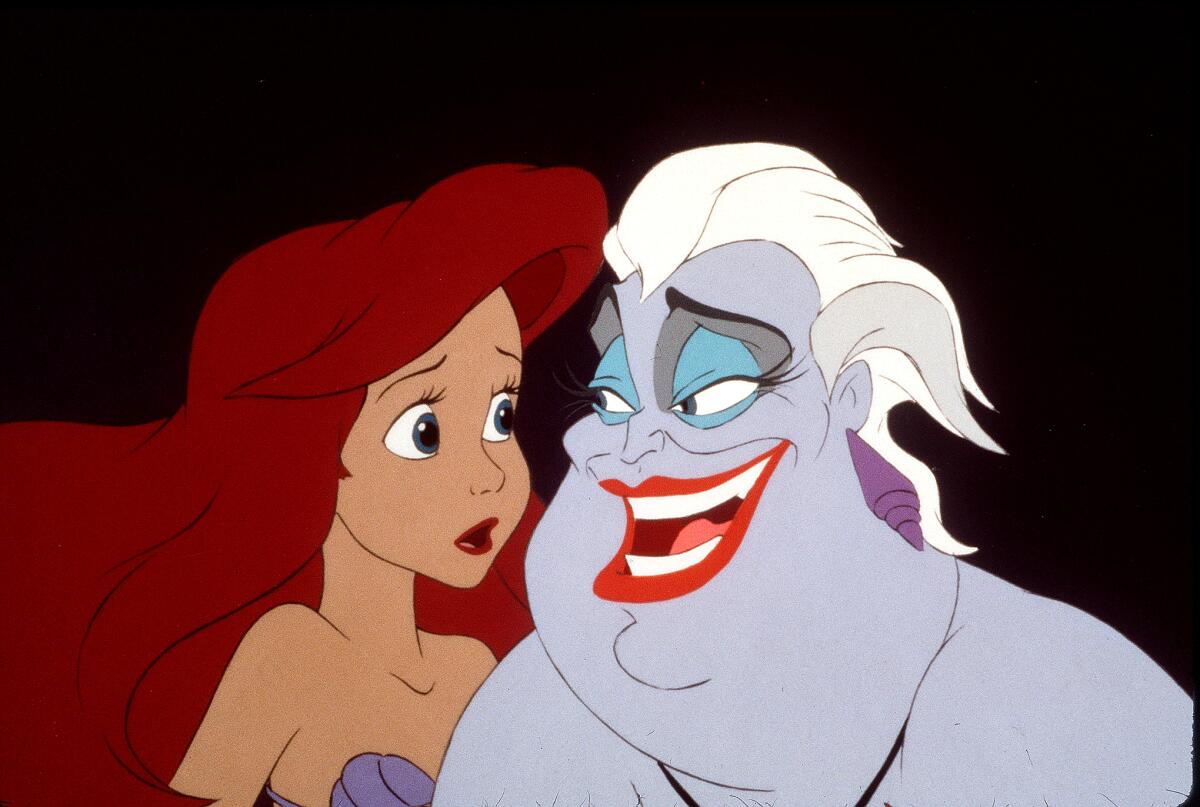
You could describe “The Little Mermaid’s” Ursula as an ambitious, villainous, octopus-like sea witch, but Pat Carroll would disagree with you on at least one point.
Carroll, who died Saturday at 95, long maintained that the spellbinding Disney icon she first voiced in the 1989 animated feature is a squid.
“Many people call her an octopus and I’m so knowledgeable I have to correct them,” Carroll explained in the documentary “Treasures Untold: The Making of Disney’s ‘The Little Mermaid.’” “She’s not an octopus, she’s a squid. … She has six tentacles instead of eight.”
The cephalopod that Ursula embodies may be debatable, but her legacy is undeniable. The larger-than-life character is a key piece of the magic that propelled “The Little Mermaid’s” success and its ascent into the pantheon of Disney animated classics. A commercial and critical hit, “The Little Mermaid” changed the trajectory of animation at the studio and ushered in a new golden age of animated features now known as the Disney renaissance.
Pat Carroll, a comedic television mainstay for decades, was credited for shaping one of the most memorable villains in Disney animation history.
Beyond that, “The Little Mermaid” and the beloved, campy Ursula are also a reflection of Disney’s complicated queer canon. It’s a history of films with themes and villains coded queer through subtext and (often troubling) stereotypes on the one hand, and the contributions of (often unsung) LGBTQ creatives on the other.
Disney’s storied history is rooted in animation. The studio’s first foray into feature-length films was 1937’s “Snow White and the Seven Dwarfs,” which broke new ground for animated storytelling. For decades the studio released animated films that are now considered classics, including “Pinocchio” (1940), “Cinderella” (1950), “Peter Pan” (1953), “Sleeping Beauty” (1959) and “The Jungle Book” (1967).
But by the 1980s, when writer-directors John Musker and Ron Clements began work on “The Little Mermaid,” the success and cultural footprint of Disney’s feature animation had begun to wane — so much so that the animation department had been moved off the studio’s Burbank lot into trailers and warehouses in nearby Glendale.
Among the stars that aligned for “The Little Mermaid” is the involvement of producer Howard Ashman. The gay playwright and lyricist envisioned the fairy-tale adaptation akin to a Broadway musical and tapped his collaborator, Alan Menken, to help write songs and compose the score of the film.
The most direct reading of “The Little Mermaid” — about a 16-year-old princess who gives up everything including her voice for a chance at happily-ever-after with a prince she falls for at first sight — has long been recognized as painfully heteronormative and plenty problematic. She’s 16! She doesn’t actually know the prince! She’s 16!
But the story about a teen who feels like an outsider in her home falling in love with someone she isn’t supposed to while she longs to feel accepted and belong somewhere she believes is beyond her reach has resonated with generations of queer fans. The queer subtext feels particularly poignant after understanding that LGBTQ artists like Ashman had a hand in bringing Ariel’s story to life.
Then there’s Ursula, who is not only flashy and flamboyant but also understands the power of transformation and performance — as well as “body language” and a woman’s voice. She’s funny, oozes confidence and, in her own way, plots against the traditions of the establishment. She’s easily one of the most charismatic characters in the movie, even if she is evil. And while the tendency to use queer stereotypes to project otherness onto a villain has long been a problematic feature of Hollywood movies, Ursula rings a bit different.
Ursula’s design is modeled after Divine, the drag performer best known for working with queer filmmaker John Waters. And Carroll has mentioned in interviews that she matched her performance of Ursula to Ashman’s after watching his rendition of the sea witch’s song “Poor Unfortunate Souls.” Ursula is a reminder that LGBTQ creatives and influences have long been a part of Disney’s history, even when the queer representation wasn’t visible.
Like Netflix with Dave Chappelle or Warner Bros. with J.K. Rowling, Disney has shown that its rainbow logos and statements of support are lip service.
“The Little Mermaid” went on to win Academy Awards for original song and score and reestablished the significance of feature animation at the studio. The film, as well as Ashman’s influence, is now credited with launching the Disney renaissance, a period of acclaimed animated musical adaptations that is still creatively mined for everything from theme-park rides to live-action films.
While characters like Ursula have been embraced by queer fans, it’s now understood that relegating queer and queer-coded characters to roles as villains or punchlines is harmful. Queer audiences and advocates have increasingly pushed for more meaningful LGBTQ representation in TV and film, particularly in children’s programming.
Carroll’s death is a moment not only to appreciate her unforgettable work, then, but also for queer fans (and allies) to continue to expect more from studios like Disney, rather than return again and again to the same handful of classics. After all, Disney needs the encouragement: More than 30 years since Ursula and “The Little Mermaid’s” debut, the company’s animated features have made minimal progress overall in terms of LGBTQ representation (especially compared to queer representation in TV animation).
If only Ursula had a spell for that.
More to Read
Only good movies
Get the Indie Focus newsletter, Mark Olsen's weekly guide to the world of cinema.
You may occasionally receive promotional content from the Los Angeles Times.
